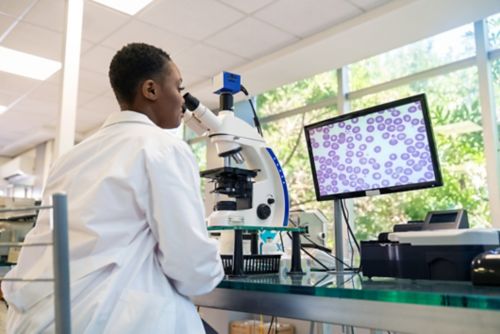Menu
Close
Back
Welcome to
Together is a new resource for anyone affected by pediatric cancer - patients and their parents, family members, and friends.
Learn MoreA biopsy is a procedure that allows doctors to remove a small piece of tissue from the body and look at it closely. One of the first steps in treatment is the diagnosis. Diagnosis of many diseases includes a biopsy.
A doctor called a pathologist looks at this tissue under a microscope to see if the cells are different from healthy cells. This is called the histology of the tissue. The way the cells look gives details about the specific type and stage of the disease.

A pathologist is a doctor trained to examine cells and tissues from a biopsy to help in the diagnosis of a disease.
The way a biopsy is done depends on where the tissue is located, the amount of tissue needed, and other procedures that are planned. Depending on the procedure, you child may need local or general anesthesia.
Types of biopsies include needle biopsy and surgical biopsy.
Some biopsies need only small cuts. Other biopsies need large cuts. In certain cases, doctors may remove the diseased tissue at the same time as the biopsy. Your provider may look at nearby lymph nodes and other tissues to see if the disease has spread.
In some cases, doctors may use general anesthesia for an exam or biopsy. This procedure is called an EUA: exam under anesthesia. Because providers must watch patients during general anesthesia, they do EUAs in an operating room with an anesthesiologist.
In childhood cancer or disease, an EUA is usually used to diagnose retinoblastoma, a cancer of the eye. Sometimes, providers do EUAs for other exams such as pelvic exams.
Doctors try to limit the use of general anesthesia when possible. But some exams require the child to be completely still. The type of exam, child’s age, and potential physical or emotional discomfort may call for the use of general anesthesia.
Usually, a biopsy is not painful. But the care team may give your child medicine to reduce any pain or discomfort.
A pathologist uses a microscope to look at cells from a biopsy. The diagnosis is based on what the cells look like, how fast they are likely to grow, and how much the cells have spread. The diagnosis tells the stage and grade of the disease or cancer. This information is in the pathology report.
Your health care team will use details from the biopsy to plan treatment. They also consider:
Learn more about cancer diagnosis and treatment.
After the procedure, follow your care team’s instructions about how to manage soreness or pain. They will also tell you how to care for the biopsy site to prevent infection.
Talk to your health care team about when and how you will get the biopsy results.
Your health care team tries to make sure your child’s biopsy does not cause any complications. Biopsy risks include bleeding, infection at the biopsy site, and scarring. There may be other risks depending on the location of the biopsy. Discuss this with your health care team.
To prevent infection at the site, follow your team’s instructions for care after your child’s biopsy. Contact your care team if you notice that your child has any signs of infection, including:
—
Reviewed: May 2023